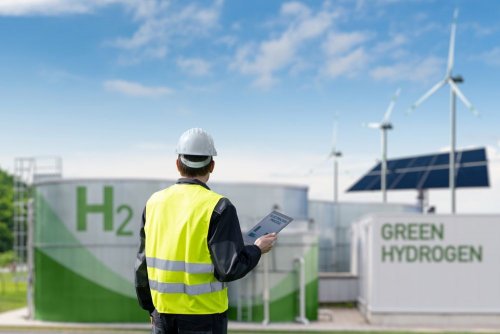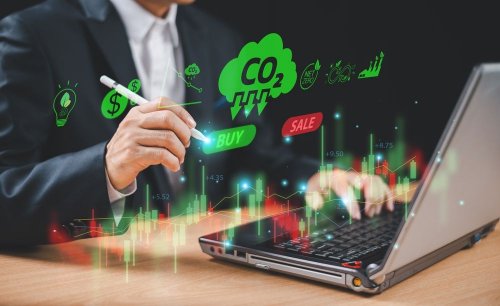More and more hydrogen projects are being announced in the world, as H2 can be pumped through pipes as gas, or transported by tankers as liquefied natural gas (LNG).
Hydrogen is part of many countries' medium-term plans for greater energy independence, reports Proactive Investors.
Although many governments are resuming support for fossil fuels to meet the need for cheap fuels, increasing investment in hydrogen has been one of the main solutions proposed by the EU following Russia's full-scale invasion of Ukraine.
Hydrogen is a good carrier or store of energy, and can also allow renewable sources such as wind and solar energy to make an even greater contribution by acting as a battery. Hydrogen is also attractive because it can be produced using various forms of energy and fuel, be it water, natural gas or synthesis gas.
According to EU President Ursula von der Leyen, the transition to RES and hydrogen, combined with greater energy efficiency, will allow Europe to become truly independent and master the energy system.
By mid-2021, the world's electrolytic capacity was about 300 MW, doubling in the last five years. However, according to the consultants of the international certification and classification society DNV, by 2030 hydrogen will still be only 0.5% of the world's energy balance, and by the middle of the century the figure will increase to 5%.
"This hydrogen production is not enough to achieve the goals of reducing greenhouse gas emissions set by the Paris Agreement, which, according to DNV, should reach 15% by 2050," - according to the statement.
Most countries around the world release hydrogen as one of the key elements in reducing greenhouse gas emissions from energy consumption. An analysis by the British government has shown that by 2050, about 20-35% of the country's energy consumption will potentially be based on hydrogen.
Oil giants Shell and BP have recently announced hydrogen deals, teaming up with hydrogen experts and increasing investment in clean energy, with automakers such as Renault and companies such as WalMart and Go-Ahead receiving hydrogen vehicles.
What is hydrogen:
- "Gray", which is currently the dominant form of hydrogen production due to its cheap cost. produced by gasification of coal or steam reforming of methane, which makes it not quite green fuel.
- "Brown" uses coal as a raw material.
- "Blue" hydrogen contains CO₂, which is released during the production of gray hydrogen, is sequestered by carbon capture and storage (CCS), which produces energy with relatively low emissions, while capturing about 90-95% of CO2. Significant use of blue hydrogen is expected in the coming years, but its attractiveness may fade.
- "Pink" hydrogen is produced as a by-product of nuclear energy.
- "Turquoise" hydrogen is one of the newest colors and is between blue and green. It is produced using methane, through a process called methane pyrolysis to form hydrogen and solid carbon. It can be carbon-free if the electricity that stimulates pyrolysis is renewable, and can even negative emissions , if the raw material is biomethane and not natural gas.
- "Green" hydrogen obtained by electrolysis, which is powered by renewable energy, is the only version of the fuel that does not contain CO2 at the place of use and at the place of production.
In 2020, world production of all forms of hydrogen was about 70 million tons per year due to direct production processes, with 98% produced from fossil fuels, mainly natural gas, and only about 2% due to low-carbon or no-carbon processes.
The EU's hydrogen strategy for 2020 states that renewable hydrogen is the most compatible option with its climate neutrality and zero pollution target in the long run.
Recent hydrogen deals
- BP PLC has a major stake in the $ 36 billion Australian Renewable Energy Center (AREH), one of the world's largest wind and solar green hydrogen projects.
- Shell has signed a contract with Ceres Power Holdings to supply a megawatt demonstration solid oxide cell for green hydrogen production as the first phase of a new collaborative relationship
- Construction giant Kier Group tests first from a potential series of hydrogen generators from AFC Energy PLC on the construction site to achieve zero goal
- Hydrogen Utopia is launching a testing program to convert plastic waste to hydrogen using Powerhouse Energy Group's waste-to-energy technology.
- WalMart expands testing involving manufacturers of hydrogen-powered vehicles and other low-emission trucks
- Renault presents a prototype car with a hydrogen fuel cell
- ATOME Energy appoints engineers to start work at its large-scale plant for the production of green hydrogen and ammonia
- Scottish battery specialist AMTE Power is negotiating an agreement with power unit developer Viritech to support the development of electric vehicles on hydrogen fuel cells.
- Resetting Dorset Salt Caves to Hydrogen-Ready Gas Storage and Green Hydrogen Production Possibility
- Hydrogen Future Industries is preparing to begin testing a prototype wind system for hydrogen production
- The FTSE 100 group of Johnson Matthey has teamed up with Germany's Enapter, a hydrogen electrolysis specialist, to try to reduce the cost of green hydrogen.
- According to her, Go-Ahead Group has signed the largest contract for the supply of green hydrogen for passenger traffic in Europe with Northern Ireland Wrightbus.
We will remind, Norwegian scientists have launched the world's first gas turbine on pure hydrogen.
As EcoPolitic reported earlier, analysts said scrap and hydrogen could reduce metallurgical emissions by 73%.





